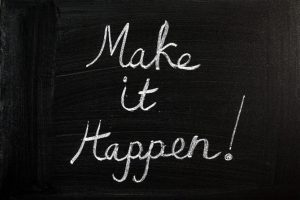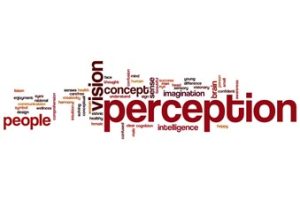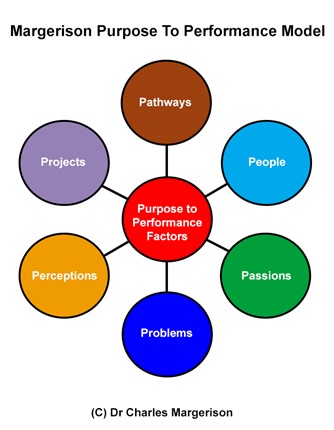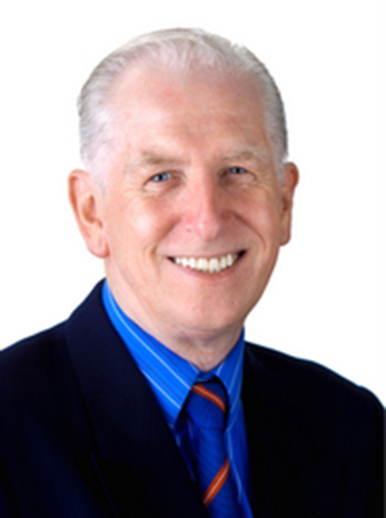 Every school focuses on language in various forms. In addition to the national or local language of the street, schools teach the language of science, mathematics, computing, character, wellbeing, health, safety and security, as well as other issues. However, few schools focus on the psychology of self-talk and how this links to personal development and achievement. This is what I refer to as the language of ‘can do spirit.’
Every school focuses on language in various forms. In addition to the national or local language of the street, schools teach the language of science, mathematics, computing, character, wellbeing, health, safety and security, as well as other issues. However, few schools focus on the psychology of self-talk and how this links to personal development and achievement. This is what I refer to as the language of ‘can do spirit.’
 Every school focuses on language in various forms. In addition to the national or local language of the street, schools teach the language of science, mathematics, computing, character, wellbeing, health, safety and security, as well as other issues. However, few schools focus on the psychology of self-talk and how this links to personal development and achievement. This is what I refer to as the language of ‘can do spirit.’
Every school focuses on language in various forms. In addition to the national or local language of the street, schools teach the language of science, mathematics, computing, character, wellbeing, health, safety and security, as well as other issues. However, few schools focus on the psychology of self-talk and how this links to personal development and achievement. This is what I refer to as the language of ‘can do spirit.’
Early in my career, I was teaching a primary school class. I gave them the task of developing a community on a ‘deserted island’, which was to be built on a classroom table. We discussed what they would need if they went to live on the island. The ideas they had were very creative. However, energy decreased and many of them fell by the wayside when some students expressed doubt on how to do it.
The negative views undermined the ‘can do spirit.’ Having learned from the above exercise, I encouraged them to test and pilot their ideas. As a result, the ‘can do spirit’ lifted and all sort of innovations appeared.
When I later studied amazing people like Mrs Gandhi, Albert Einstein, Nelson Mandela and many others, I noted how they used the language of what I call ‘can do spirit.’ They challenged existing ideas. They gave permission to others to bring about change. Their positive language raised expectations.
In my research, I noticed that breakthroughs across a broad spectrum of science, music, engineering, business, art, medicine and many other important areas, emerged when there was a positive ‘can do’ language. In each case, the language of ‘can do’ helped develop a spirit of ‘will do’ amongst those involved.
I noticed this ‘can do spirit’ language when I became a partner in a publishing business. New ideas were encouraged. Differing views were tested through action research projects, rather than just logical argument. We held annual ‘Think Tanks’ to foster innovation through discussion
 Students can learn the ‘can do spirit’ language. It starts by observing and listening to others. Do their family members and friends restrict or encourage ideas? Do they use words like ‘have a go’, or ‘keep trying.’
Students can learn the ‘can do spirit’ language. It starts by observing and listening to others. Do their family members and friends restrict or encourage ideas? Do they use words like ‘have a go’, or ‘keep trying.’
As a child gets to an age when they connect words with activities, their self-talk will determine the extent to which they experiment and persist in learning. Those that arrive at school with weak self-confidence and low ‘can do spirit,’ will need special support to help them develop. Positive self-talk is at the heart of being a ‘can do’ person.
While walking through a shopping centre, I heard a mother say to her daughter, aged about 5 years, ‘you need believe in yourself more!’ It was a general way to encourage her daughter to develop the ‘can do spirit.’ To really help, it would have been useful to give specific advice on how to do that, for example, by complimenting the young girl on her achievements.
It is also important to ask students questions about the task they are doing. This helps them express their perceptions. These will indicate their level of confidence. They will say things like, ‘I am enjoying this,’ or, ‘I do not understand how this works.’ Having someone to talk through difficulties with, can help develop the ‘can do spirit’
Leonardo da Vinci – the great innovator
I have researched the life stories of more than 500 amazing achievers to discover what they did and why. For example, Dr Marie Curie, is the only woman to win two Nobel Prizes for scientific discoveries. My research included Faraday who discovered electricity, and Pasteur who revolutionized our understanding of bacterial infection. Humanitarians, like Tubman, Barnardo and Nightingale changed people’s lives by their selfless efforts.

There are many more unsung heroes and heroines whose outstanding contributions are not as well known. They all had an important purpose and dedicated their lives to achieving it through their ‘can do spirit.’
Many others who had ideas, education, and money did not succeed to the same level because their level of determination was less. We need to help students and adults of today to develop that kind of spirit. By doing this, they will be able to make the best of their lives and also help others to do so.
A review of people who have met challenges and overcame adversity shows that they develop the following characteristics.
An outstanding example is Helen Keller. She contracted an illness early in her life that left her deaf and blind. Despite that, through her ‘can do spirit’ she became a leader for the disabled.
Another example is Harriet Tubman. She escaped from slavery and, although formally uneducated, became a leader for civil rights.
Therefore, our work through Amazing People Schools provides resources for students to help them understand and develop ‘can do’ character strengths.
The amazing people in our series provide brilliant exemplars of achievement. The following are key issues that students can focus upon in order to show and apply their ‘can do spirit.’
It is clear that people who identified a purpose that they regarded as important, invariably worked hard to achieve it. They established a set of personal beliefs about their priorities. These guided the way they invested their time. Therefore, a key part of character education is to encourage students to develop projects on issues about which they feel passionate.
These projects can focus on major social issues, such as the environment, civil rights, health, music, technology. These areas of expression will enable students to identify a purpose they wish to pursue.

All the amazing people in my research gave themselves permission to take action. Rather than inventing restrictions, barriers and excuses, they developed proactive plans. Students can do this by listing the personal permissions they will give themselves. These include specific personal permissions with to do lists in order to: –
 Amazing people led with their perception, vision and intuition. Once they perceived what was possible, they powered ahead. They focussed on the ‘how to’ questions.
Amazing people led with their perception, vision and intuition. Once they perceived what was possible, they powered ahead. They focussed on the ‘how to’ questions.
Students can be taught how to develop their own ‘how to’ language. In a meeting, they can foster quality discussion by encouraging everyone to express a view on problems and solutions. For example, if doubt is expressed about an idea and there is a division of opinion those trained in the ‘can do spirit’ say ‘rather than argue, let us test the proposal.’
An interesting way to help students widen their perceptions is through a word-game classroom exercise. Students all receive 10 letters and are asked to produce, in a small team, as many words as possible from those letters. They are given three or four successive time shift periods of 4 minutes. Their output will usually increase after each shift.
The question asked is ‘why?’ The answer is always that they perceive better methods as a result of experience and conversation between the shifts. In effect, they increase their ‘can do’ language by reducing restrictions and increasing their boundary of what is permissible, once they see the competition from other teams. This helps improve the performance for both the individual and group activity.
An individual may have excellent ideas, but it will take a team to carry them forward into applications. Therefore, it is vital that students learn how to arrange and conduct meetings to gain support. These are skills that can be taught.
 The start point is to ask each student to establish a meeting with an agenda, by listing the topics to be discussed. For example, each student can be asked to call a meeting on a topic which they choose – such as, ‘how can our sports team improve?’ or, ‘how do we help each other learn more effectively?’
The start point is to ask each student to establish a meeting with an agenda, by listing the topics to be discussed. For example, each student can be asked to call a meeting on a topic which they choose – such as, ‘how can our sports team improve?’ or, ‘how do we help each other learn more effectively?’
In this way, students gain the confidence to coordinate the views of others. In particular, by taking the role of chairperson, the student can learn how to steer group discussion through doubts, objections and differences, to a summary of agreements.
We encourage students to use the personal interview process to meet local people who are currently making outstanding contributions, and to learn from them. In the process, students learn about the ‘can do spirit’ from the discussions. For example, they can interview nurses, fire fighters, cleaners and others who are doing important community work.
Likewise, students can conduct virtual interviews with amazing people in history who converted an important purpose into successful performance. This can be done by posing questions that they would like to ask Keller, Mozart, Tubman or Disney. Then, via research on the people chosen, they can write up what they think the amazing people would say in reply. In doing so, they understand what amazing people did in order to achieve. In particular, students understand the meaning of practical ‘can do spirit’ via the thinking, self-permissions and action taken by high achievers.
We support educators by providing workshops on both the content and the ‘can do spirit’ processes, so that they can coach and guide students. This is an approach based on the steps to be taken in order to convert ideas to achievements.
We believe this is the way that practical character education can be advanced and at the same time improve the wellbeing of students.
To support the development of the ‘can do spirit’, I have developed a model of key words. These are the words that I have identified as those which were central to the self-talk of high achievers. The Purpose to Performance Model indicates the key factors that students can focus upon to improve their level of achievement.

We can all learn from the processes used by amazing achievers. They were diverse in terms of their race, religion, and education. However, they all developed ways and means of converting ideas into action. That started when they focussed on an important purpose. A start point is to write yourself a note based on the question –
“What have I learned about myself that gives a purpose to my life?”
Once a person is clear on their purpose, they will develop their own ‘can do’ language to convert their ideas into action.

Dr Charles Margerison, President and founder of Amazing People Worldwide, is a Psychologist. He is also President of Amazing People Schools. Dr Margerison has consulted widely for major organizations in the fields of organizational and educational psychology. He was previously Professor of Management at Cranfield University, UK, and the University of Queensland, Australia. He founded Amazing People Worldwide in 2006 and is supported by a dedicated global team. He previously co-founded Emerald Publications, and Team Management Systems and has authored more than 30 books. Dr Charles is also the creator of ‘Can Do Kids Worldwide, a virtual music group that helps students to learn about countries and cultures through music. He has also developed Imagineland, for early learners. You can follow him on Linked in .
For more information, please email info@amazingpeopleworldwide.com
Websites:



Copyright © 2021. Amazing People Worldwide.
All Rights Reserved.
This site is protected by reCAPTCHA and the Google
Privacy Policy and Terms of Service apply.



